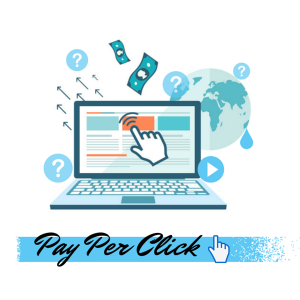Basic Facts About Pay Per Click Advertising

Site owners needing fast and massive traffic to their new websites or projects can find a good option in paid search or pay-per-click (PPC) marketing. Pay per click is an internet advertising model in which publishers get paid by advertisers with every click on ads.
PPC fees may be flat or bid-based. Comparison shopping engines are the most common users of flat-rate PPC. These are search engines or networks that generate highly compartmentalized sponsored links or ads with good viewer targeting capabilities. Rate cards are typically used and prices vary with every network or content site.

Advertisers wishing to have their ads shown on more popular content pages with valuable visitors pay comparatively more for these ad spots. Most popular ad networks use bid-based rates for pricing their services. Each advertiser submits the highest amount they are willing to pay for ad slots, and bids are automatically compared and processed by bid management software every time a search term or keyword is triggered by a web user.
Day, time, and geographical locations are the most common filters set by advertisers in an auction-based ad contract. When an internet user enters a given keyword or group of keywords, filters are applied by ad network systems and only qualifying ads are entered into the bidding process.
Pay per click ads may appear on search engine results pages (SERPs) or on content sites.

The search engine display page typically has multiple ad slots which result in multiple winning bids. The ad with the highest bid stands a good chance of occupying the coveted top spot, but other factors such as quality and relevance can affect final ads placement. Major ad networks may allow the appearance of PPC ads on the sites of their network partners or affiliate publishers.
Third-party media are typically content sites. The page context, niche, or subject determines the types of ads that are going to be displayed. Publishers get a decent share of the advertiser’s fee from Google. Contextual ads, as these PPC ads are called, generally have lower click-through and conversion rates and are relatively less valued than search engine display ads.
The cost per click (CPC) of paid search ads are commonly not based on bid amount alone. Most ad networks use a ranking and pricing formula that factors quality, ad content, and relevance equally in relation to bidding amount. Ad rankings are determined by multiplying the cost per click (CPC) or bid amount with the quality score. The ad with the highest combined score gets top ranking and wins the auction.
Google AdWords Computes for Price Per Click With This Formula:
Final Price = Ad Rank of Advertiser ÷ Your Quality + 0.01
Below Your Ad Rank Score

- It should be noted that a high-quality score can considerably lower advertising costs, and it’s something to pay close attention to when planning a pay-per-click program.
- Quality score is arrived at using a combination of factors such as ads content, ads performance, and landing page quality. Relevant and well-written content gets high scores on ad networks’ quality rating system.
- There are a number of ad networks vying for advertisers’ paid search advertising contracts. Deciding on what platform to use is an integral part of PPC planning.
- Ad platforms with high search volumes can give a tremendous traffic boost to a website at the fastest time but usually, come with a hefty price per click.
- Ad networks with less traffic driving capabilities typically charge a lesser cost per click but building and developing brand or site awareness can be difficult with low search quantity.
- Implementing a pay per click advertising campaign necessitates the use of web tools and resources to set up, track and continuously review, and adjust content.
